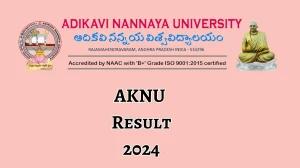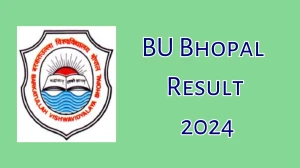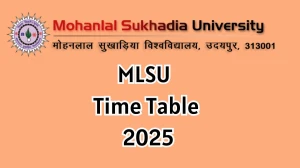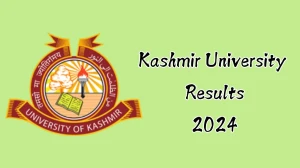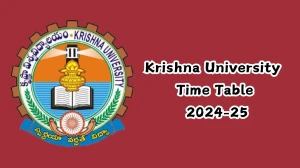- Rojgarlive »
- Education »
- COMEDK UGET Syllabus 2024 @ comedk.org Check Exam Pattern Syllabus Here
COMEDK UGET Syllabus 2024 @ comedk.org Check Exam Pattern Syllabus Here
by Keerthika
Updated Apr 29, 2024

COMEDK UGET Syllabus 2024 @ comedk.org
COMEDK has recently unveiled the syllabus for COMEDK UGET 2024 on its official website, comedk.org. Candidates can access the comprehensive syllabus and exam pattern details on the same platform. The syllabus for COMEDK UGET 2024 comprises topics drawn from the curriculum of PUC classes 11 and 12, which will be assessed in the undergraduate entrance test.
COMEDK 2024 syllabus, including weightage based on previous year trends. For further details regarding the syllabus of COMEDK UGET 2024, we encourage you to read the full article.
Check - COMEDK UGET Syllabus 2024
COMEDK 2024 Syllabus for Maths
|
Class |
Units |
|
Class 11 |
Sets |
|
Relations and Functions |
|
|
Trigonometric Functions |
|
|
Principle of Mathematical Induction |
|
|
Algebra |
|
|
Linear and Quadratic Inequalities |
|
|
Permutation and Combination |
|
|
Binomial Theorem |
|
|
Sequences and Series |
|
|
Co-ordinate Geometry |
|
|
Conic Section |
|
|
Introduction to Three-dimensional Geometry |
|
|
Calculus |
|
|
Probability |
|
|
Class 12 |
Relations and Functions |
|
Inverse trigonometric functions |
|
|
Matrices |
|
|
Determinants |
|
|
Adjoint and Inverse of a matrix |
|
|
Differentiability |
|
|
Applications of Derivatives |
|
|
Indefinite Integrals |
|
|
Definite integrals |
|
|
Application of the integrals |
|
|
Differential Equations |
|
|
Vectors Threedimensional Geometry |
|
|
Probability |
COMEDK Syllabus 2024 for Physics
|
Class |
Unit |
Topics |
|
Class 11 |
Physical World and Measurement |
Physics - scope and excitement; nature of physical laws; Physics, technology and society. Need for measurement: Units of measurement; systems of units; SI units, fundamental and derived units. Length, mass and time measurements; accuracy and precision of measuring instruments; errors in measurement; significant figures. Dimensions of physical quantities, dimensional analysis and its applications. |
|
Kinematics |
Frame of reference, Motion in a straight line: Position-time graph, speed and velocity. Uniform and non-uniform motion, average speed and instantaneous velocity. Uniformly accelerated motion, velocity-time and position-time graphs. Relations for uniformly accelerated motion (graphical treatment). Scalar and vector quantities; Position and displacement vectors, equality of vectors, multiplication of vectors by a real number; addition and subtraction of vectors. Relative velocity. Unit vector; Resolution of a vector in a plane - rectangular components. Motion in a plane.Cases of uniform velocity and uniform acceleration-projectile motion. Uniform circular motion. |
|
|
Laws of Motion |
Intuitive concept of force. Inertia, Newton's first law of motion; momentum and Newton's second law of motion; impulse; Newton's third law of motion. Law of conservation of linear momentum and its applications. Equilibrium of concurrent forces. Static and kinetic friction, laws of friction, lubrication. Dynamics of uniform circular motion: Centripetal force, examples of circular motion (vehicle on a level circular road, vehicle on banked road). |
|
|
Work, Energy, and Power |
Work done by a constant force and a variable force; kinetic energy, work-energy theorem, power. Notion of potential energy, potential energy of a spring, conservative forces: conservation of mechanical energy (kinetic and potential energies); non-conservative forces: motion in a vertical circle. |
|
|
Motion of System of Particles and Rigid Body |
Centre of mass of a two-particle system, momentum conservation and centre of mass. Centre of mass of a rigid body; centre of mass of a uniform rod. Moment of a force, torque, angular momentum, laws of conservation of angular momentum and its applications. Equilibrium of rigid bodies, rigid body rotation and equations of rotational motion, comparison of linear and rotational motions. Moment of inertia, radius of gyration.Values of moments of inertia, for simple geometrical objects (no derivation). Statement of parallel and perpendicular axes theorems and their applications. |
|
|
Gravitation |
Keplar's laws of planetary motion.The universal law of gravitation. Acceleration due to gravity and its variation with altitude and depth. Gravitational potential energy and gravitational potential. Escape velocity. Orbital velocity of a satellite. Geo-stationary satellites. |
|
|
Properties of Bulk Matter |
Elastic behaviour, Stress-strain relationship, Hooke's law, Young's modulus, bulk modulus, shear modulus of rigidity, Poisson's ratio; elastic energy. Pressure due to a fluid column; Pascal's law and its applications. Effect of gravity on fluid. Viscosity, Stokes' law, terminal velocity, streamline and turbulent flow, critical velocity. Bernoulli's theorem and its applications. Surface energy and surface tension, angle of contact, excess of] pressure across a curved surface, application of surface tension ideas to drops, bubbles and capillary rise. Heat, temperature, thermal expansion; thermal expansion of solids, liquids and gases, anomalous expansion of water; specific heat capacity; Cp, Cv - calorimetry; change of state - latent heat capacity. Heat, temperature, thermal expansion; thermal expansion of solids, liquids and gases, anomalous expansion of water; specific heat capacity; Cp, Cv - calorimetry; change of state - latent heat capacity. |
|
|
Thermodynamics |
Thermal equilibrium and definition of temperature (zeroth law of thermodynamics).Heat, work and internal energy. First law of thermodynamics. Isothermal and adiabatic processes. Second law of thermodynamics: reversible and irreversible processes. Heat engine and refrigerator. |
|
|
Behavior of Perfect Gases and Kinetic Theory of Gases |
Equation of state of a perfect gas, work done in compressing a gas. Kinetic theory of gases - assumptions, concept of pressure. Kinetic interpretation of temperature; rms speed of gas molecules; degrees of freedom, law of equi-partition of energy (statement only) and application to specific heat capacities of gases; concept of mean free path, Avogadro's number. |
|
|
Oscillations and Waves |
Periodic motion - time period, frequency, displacement as a function of time. Periodic functions. Simple harmonic motion (S.H.M) and its equation; phase; oscillations of a spring-restoring force and force constant; energy in S.H.M. Kinetic and potential energies; simple pendulum derivation of expression for its time period. Free, forced and damped oscillations (qualitative ideas only), resonance. Wave motion. Transverse and longitudinal waves, speed of wave motion. Displacement relation for a progressive wave. Principle of superposition of waves, reflection of waves, standing waves in strings and organ pipes, fundamental mode and harmonics, Beats, Doppler. |
|
|
Class 12 |
Electrostatics |
Electric Charges; Conservation of charge, Coulomb’s law-force between two point charges, forces between multiple charges; superposition principle and continuous charge distribution. Electric field, electric field due to a point charge, electric field lines, electric dipole, electric field due to a dipole, torque on a dipole in uniform electric field. Electric flux, statement of Gauss’s theorem and its applications to find field due to infinitely long straight wire, uniformly charged infinite plane sheet and uniformly charged thin spherical shell (field inside and outside). Electric potential, potential difference, electric potential due to a point charge, a dipole and system of charges; equipotential surfaces, electrical potential energy of a system of two point charges and of electric dipole in an electrostatic field. Conductors and insulators, free charges and bound charges inside a conductor. Dielectrics and electric polarisation, capacitors and capacitance, combination of capacitors in series and in parallel, capacitance of a parallel plate capacitor with and without dielectric medium between the plates, energy stored in a capacitor. Van de Graaff generator. |
|
Current Electricity |
Electric current, flow of electric charges in a metallic conductor, drift velocity, mobility and their relation with electric current; Ohm’s law, electrical resistance, V-I characteristics (linear and non-linear), electrical energy and power, electrical resistivity and conductivity. temperature dependence of resistance. Internal resistance of a cell, potential difference and emf of a cell, combination of cells in series and in parallel. Kirchhoff’s laws and simple applications. Wheatstone bridge, metre bridge. Potentiometer - principle and its applications to measure potential difference and for comparing emf of two cells; measurement of internal resistance of a cell. |
|
|
Magnetic Effects of Current and Magnetism |
Concept of magnetic field, Oersted’s experiment. Biot - Savart law and its application to current carrying circular loop. Ampere’s law and its applications to infinitely long straight wire. Straight and toroidal solenoids, Force on a moving charge in uniform magnetic and electric fields. Force on a current-carrying conductor in a uniform magnetic field. The force between two parallel current-carrying conductors-definition of ampere. Torque experienced by a current loop in a uniform magnetic field; moving coil galvanometer- its current sensitivity. Current loop as a magnetic dipole and its magnetic dipole moment. Magnetic dipole moment of a revolving electron. Magnetic field intensity due to a magnetic dipole (bar magnet) along its axis and perpendicular to its axis. Torque on a magnetic dipole (bar magnet) in a uniform magnetic field; bar magnet as an equivalent solenoid, magnetic field lines; Earth’s magnetic field and magnetic elements. Para-, dia- and ferro- magnetic substances, with examples. Electromagnets and factors affecting their strengths. Permanent magnets |
|
|
Electromagnetic Induction and Alternating Currents |
Electromagnetic induction; Faraday’s laws, induced emf and current; Lenz’s Law, Self and mutual induction. Alternating currents, peak and rms value of alternating current/voltage; reactance and impedance; LC oscillations (qualitative treatment only), LCR series circuit, resonance; power in AC circuits, wattless current, AC generator and transformer. |
|
|
Electromagnetic waves |
Electromagnetic waves and their characteristics (qualitative ideas only). Transverse nature of electromagnetic waves. Electromagnetic spectrum (radio waves, microwaves, infrared, visible, ultraviolet, X-rays, gamma rays) including elementary facts about their uses |
|
|
Optics |
Reflection of light, spherical mirrors, mirror formula. Refraction of light, total internal reflection and its applications, optical fibres, refraction at spherical surfaces, lenses, thin lens formula, lensmaker’s formula. Magnification, power of a lens, combination of thin lenses in contact combination of a lens and a mirror. Refraction and dispersion of light through a prism. Scattering of light-blue colour of the sky and reddish appearance of the sun at sunrise and sunset. |
|
|
Dual Nature of Matter and Radiation |
Dual nature of radiation. Photoelectric effect, Einstein’s photoelectric equation-particle nature of light. Matter waves-wave nature of particles, de Broglie relation. Davisson-Germer experiment (experimental details should be omitted; only the conclusion should be explained). |
COMEDK exam Syllabus 2024 for Chemistry
|
Class |
Units |
Topics |
|
Class 11 & 12 |
Atomic Structure |
Introduction to Structure of Atom, Atomic models, Quantum Mechanical Model, Shapes of Atomic Orbitals, Rules for Filling Electrons in Orbitals, Stability of Completely Filled and half-filled Orbitals. |
|
Chemical Bonding |
Types of Chemical Bonds, Valence Bond Theory, Molecular Orbital Theory, Hydrogen Bond. |
|
|
States of Matter: Gases and Liquids |
Intermolecular Forces, Laws Governing Gaseous State, Ideal Behaviour, Deviation from Ideal Behaviour, Liquefaction of Gases, Liquid State |
|
|
Thermodynamics |
Thermodynamic Terms, Thermodynamic Quantities, First Law of Thermodynamics, Thermochemistry, Spontaneity, Third Law of Thermodynamics,. |
|
|
Chemical Equilibrium |
Introduction to Equilibrium, Equilibrium in Physical Processes, Equilibrium in Chemical Processes, Types of Chemical Equilibria, Applications, of Equilibrium Constant, Factors Affecting Equilibria, Ionic Equilibrium in Solution, Ionization of Acids and Bases, Buffer Solutions, Solubility Equilibria of Sparingly, Soluble Salts |
|
|
Solid State |
Introduction to Solid State Chemistry, Classification of Solids on the Basis of Order in the Arrangement, Crystal Lattices and Unit Cells, Close Packing in Solids, Imperfections in Solids, Electrical Properties, Magnetic Properties. |
|
|
Solutions |
Introduction to solutions, Types of Solutions, Expressing the Concentration of Solutions of Solids in Liquids, Solubility, Vapour Pressure of Liquid Solutions, Classification of Liquid-Liquid Solutions on the basis of Raoult’s Law, Colligative Properties, Abnormal Molecular Mass. |
|
|
Redox reactions and Electrochemistry |
Oxidation and Reduction Reactions, Redox Reactions in Terms of Electron Transfer Reactions, Oxidation Number, Types of Redox Reactions, Types of Redox Reactions, Balancing of Redox Reactions, Types of Electrochemical Cells, Electrolysis, Conductance in Electrolytic Solutions, Corrosion. |
|
|
Block & p-Block Elements and metallurgy |
S-Block Elements Group 1 Elements & Group 2 Elements, P-Block Elements Group 13, 14, 15, 16, 17 and 18 Elements. |
|
|
d and f - Block Elements and Coordination Compounds |
d-Block elements, F-Block Elements, Coordination Compounds, IUPAC Nomenclature of Coordination Compounds, Valence Bond Theory as Applied to Coordination Compounds, Importance of Coordination Compounds. |
|
|
Surface Chemistry |
Adsorption on a Surface, Catalysis, Colloids. |
|
|
Chemical Kinetics |
Rate of Chemical Reaction, Factors Affecting Rate of a Reaction, Integrated Rate Equations and Half Life, Temperature Dependence of Rate of Reaction, Collision Theory. |
|
|
Hydrocarbons, Haloalkanes, and Haloarenes |
Types of Hybridization of Carbon, Classification of Organic Compounds, IUPAC Nomenclature of Organic Compounds, Stereochemistry and Isomerism, Homolytic and Heterolytic Fission of a Covalent Bond, Basics of Organic Reaction, Electronic Displacements in a Covalent Bond, Aromaticity, Alkanes (Upto 5 Carbon Atoms), Alkenes (Upto 5 Carbon Atoms), Alkynes (Upto 5 Carbon Atoms), Arenes, Haloalkanes and haloarenes. |
|
|
Oxygen containing Organic compounds |
Structure, Preparation of Alcohols and Phenols, Properties of Alcohols, Phenols and Ethers, Preparation of Ethers & Chemical Properties, Physical, Chemical Properties and Uses of Aldehydes and Ketones, Carboxylic acids. |
|
|
Nitrogen containing Organic compounds |
Structure, Preparation of Amines, Physical and Chemical Properties of Amines, Diazonium Salts. |
|
|
Bio-Molecules and Polymers |
Biomolecules, Polymers |
|
|
Chemistry in everyday life |
Chemicals in Medicines, Food, and Hygiene (Soaps and Detergents) |
|
|
Environmental Chemistry |
Environmental, Pollution, Water Pollution, Industrial Pollution. |
COMEDK UGET Syllabus 2024? -FAQ
Since the questions in the COMEDK exam can be asked from any topic mentioned in the syllabus, it is advisable to avoid missing out on any topic.
Candidates can check the COMEDK syllabus 2024 pdf at the official website - comedk.org.
